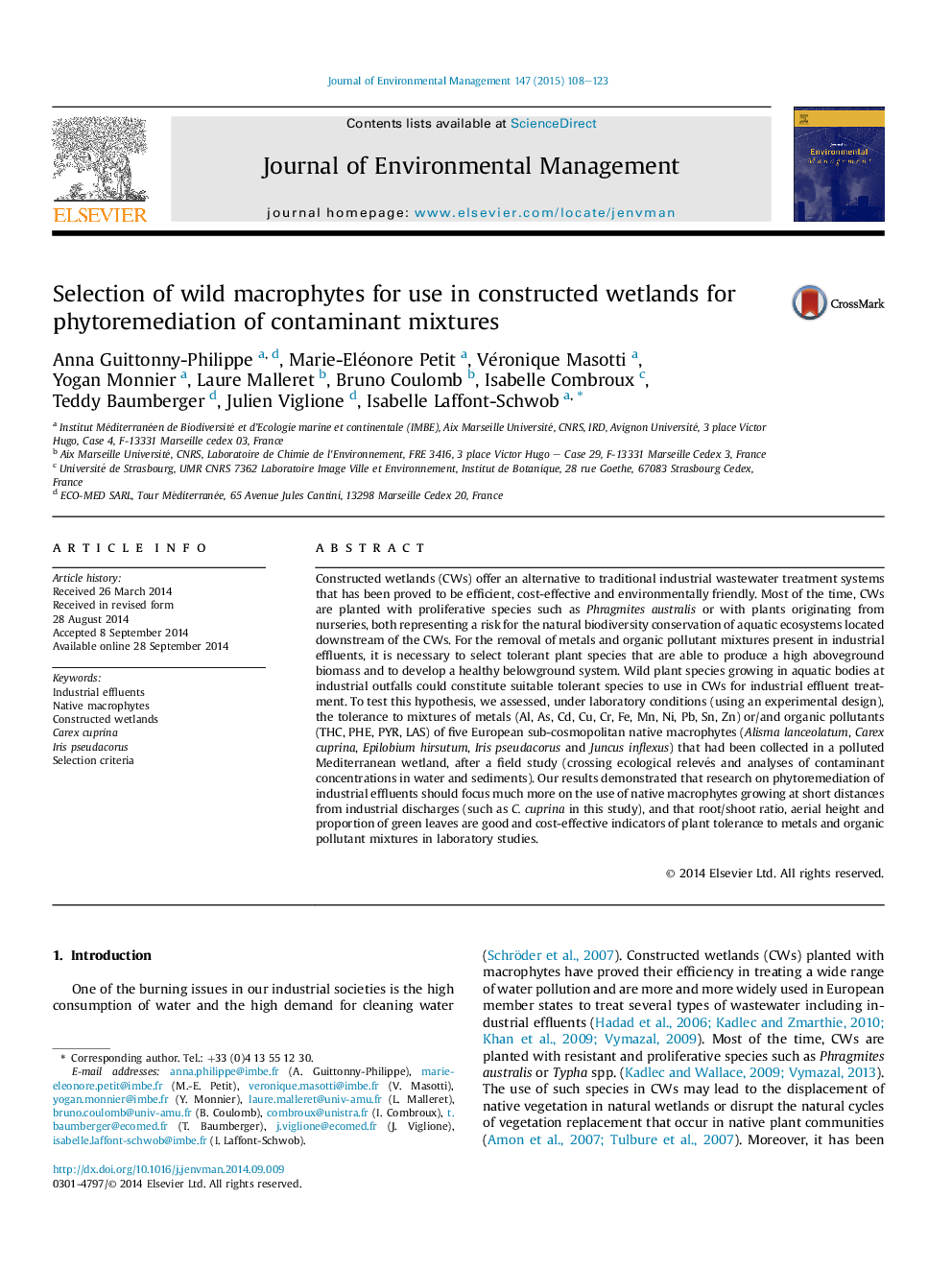| Article ID | Journal | Published Year | Pages | File Type |
|---|---|---|---|---|
| 1055652 | Journal of Environmental Management | 2015 | 16 Pages |
•Five native macrophyte species were selected through a field study.•A microcosm study enabled the assessment of their tolerance to industrial mixtures.•Leaf senescence, aerial elongation and root biomass were good tolerance indicators.•Carex cuprina was the best candidate for metals and organic pollutants treatment.•Our approach may be extended to other native macrophytes from industrial outfalls.
Constructed wetlands (CWs) offer an alternative to traditional industrial wastewater treatment systems that has been proved to be efficient, cost-effective and environmentally friendly. Most of the time, CWs are planted with proliferative species such as Phragmites australis or with plants originating from nurseries, both representing a risk for the natural biodiversity conservation of aquatic ecosystems located downstream of the CWs. For the removal of metals and organic pollutant mixtures present in industrial effluents, it is necessary to select tolerant plant species that are able to produce a high aboveground biomass and to develop a healthy belowground system. Wild plant species growing in aquatic bodies at industrial outfalls could constitute suitable tolerant species to use in CWs for industrial effluent treatment. To test this hypothesis, we assessed, under laboratory conditions (using an experimental design), the tolerance to mixtures of metals (Al, As, Cd, Cu, Cr, Fe, Mn, Ni, Pb, Sn, Zn) or/and organic pollutants (THC, PHE, PYR, LAS) of five European sub-cosmopolitan native macrophytes (Alisma lanceolatum, Carex cuprina, Epilobium hirsutum, Iris pseudacorus and Juncus inflexus) that had been collected in a polluted Mediterranean wetland, after a field study (crossing ecological relevés and analyses of contaminant concentrations in water and sediments). Our results demonstrated that research on phytoremediation of industrial effluents should focus much more on the use of native macrophytes growing at short distances from industrial discharges (such as C. cuprina in this study), and that root/shoot ratio, aerial height and proportion of green leaves are good and cost-effective indicators of plant tolerance to metals and organic pollutant mixtures in laboratory studies.
